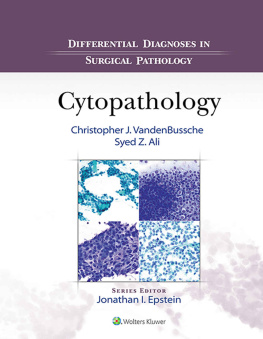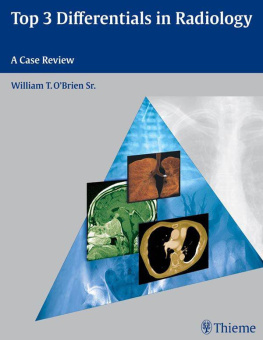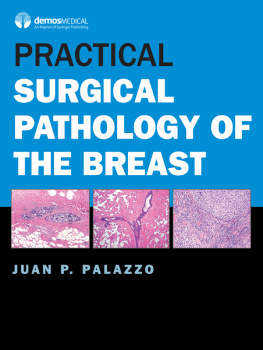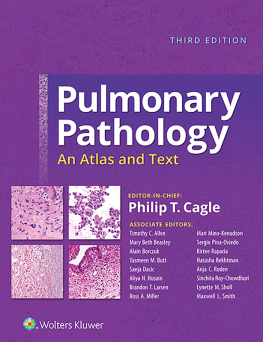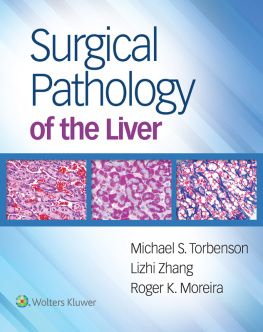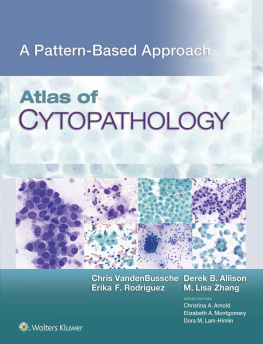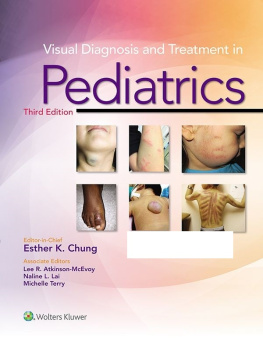Differential Diagnoses in Surgical Pathology
Cytopathology
Christopher J. VandenBussche, MD, PhD
Associate Director, Division of Cytopathology
Associate Professor of Pathology and Oncology
The Johns Hopkins University School of Medicine
Baltimore, Maryland
Syed Z. Ali, MBBS, MD
Director, Division of Cytopathology
Professor of Pathology and Radiology
The Johns Hopkins University School of Medicine
Baltimore, Maryland
Series Editor
Jonathan I. Epstein, MD
Professor of Pathology, Urology and Oncology
The Reinhard Professor of Urological Pathology
Director of Surgical Pathology
The Johns Hopkins Medical Institutions
Baltimore, Maryland
Copyright
Acquisitions Editor: Keith Donnellan
Development Editor: Ariel S. Winter
Editorial Coordinator: Julie Kostelnik
Marketing Manager: Julie Sikora
Production Project Manager: Kim Cox
Design Coordinator: Joan Wendt
Manufacturing Coordinator: Beth Welsh
Prepress Vendor: TNQ Technologies
Copyright 2020 Wolters Kluwer.
All rights reserved. This book is protected by copyright. No part of this book may be reproduced or transmitted in any form or by any means, including as photocopies or scanned-in or other electronic copies, or utilized by any information storage and retrieval system without written permission from the copyright owner, except for brief quotations embodied in critical articles and reviews. Materials appearing in this book prepared by individuals as part of their official duties as U.S. government employees are not covered by the above-mentioned copyright. To request permission, please contact Wolters Kluwer at Two Commerce Square, 2001 Market Street, Philadelphia, PA 19103, via email at (products and services).
987654321
Printed in China
Library of Congress Cataloging-in-Publication Data
ISBN-13: 978-1-975113-14-8
Cataloging in Publication data available on request from publisher.
This work is provided as is, and the publisher disclaims any and all warranties, express or implied, including any warranties as to accuracy, comprehensiveness, or currency of the content of this work.
This work is no substitute for individual patient assessment based upon healthcare professionals examination of each patient and consideration of, among other things, age, weight, gender, current or prior medical conditions, medication history, laboratory data and other factors unique to the patient. The publisher does not provide medical advice or guidance and this work is merely a reference tool. Healthcare professionals, and not the publisher, are solely responsible for the use of this work including all medical judgments and for any resulting diagnosis and treatments.
Given continuous, rapid advances in medical science and health information, independent professional verification of medical diagnoses, indications, appropriate pharmaceutical selections and dosages, and treatment options should be made and healthcare professionals should consult a variety of sources. When prescribing medication, healthcare professionals are advised to consult the product information sheet (the manufacturers package insert) accompanying each drug to verify, among other things, conditions of use, warnings and side effects and identify any changes in dosage schedule or contraindications, particularly if the medication to be administered is new, infrequently used or has a narrow therapeutic range. To the maximum extent permitted under applicable law, no responsibility is assumed by the publisher for any injury and/or damage to persons or property, as a matter of products liability, negligence law or otherwise, or from any reference to or use by any person of this work.
shop.lww.com
Differential Diagnoses in Surgical Pathology Series
Series Editor: Jonathan I. Epstein
Differential Diagnoses in Surgical Pathology: Genitourinary System
Jonathan I. Epstein and George J. Netto, 2014
Differential Diagnoses in Surgical Pathology: Gastrointestinal System
Elizabeth A. Montgomery and Whitney M. Green, 2015
Differential Diagnoses in Surgical Pathology: Pulmonary Pathology
Rosane Duarte Achcar, Steve D. Groshong and Carlyne D. Cool, 2016
Differential Diagnoses in Surgical Pathology: Head and Neck
William H. Westra and Justin A. Bishop, 2016
Differential Diagnoses in Surgical Pathology: Breast
Jean F. Simpson and Melinda E. Sanders, 2016
Preface
The practice of cytopathology revolves around the creation of a differential diagnosis. Often, without the benefit of the level of architecture seen in histologic sections, the cytopathologist must use the smallest cytomorphologic cluesand even look beyond cells and into the surrounding backgroundto narrow the differential diagnosis or even arrive at a singular diagnosis.
This book compares similar entities that are often in the differential diagnosis together and focuses on those small details that can help favor one entity over another. In addition to high yield, bulleted cytomorphologic descriptions and representative images, the book also includes important clinical differences between lesions, as well as the latest molecular alterations associated with each entity, when known.
Some of the presented entities are common, while others are rare. This book may be used to learn about a given entity in more detail, to broaden a differential diagnosis, or eliminate less likely diagnoses from a differential. Whether used in a pinch or read from cover-to-cover, we hope this book will become a trusted reference for the reader when cytopathology specimens are encountered.
Christopher J. VandenBussche and Syed Z. Ali
Table of Contents
chapter 1
Gynecologic Cytopathology
1.1 Low-Grade Squamous Intraepithelial Lesion (LSIL) Versus High-Grade Squamous Intraepithelial Lesion (HSIL)
| Low-Grade Squamous Intraepithelial Lesion (LSIL) | High-Grade Squamous Intraepithelial Lesion (HSIL) |
| Age | Any age but more likely to be transient infection in younger women | Any age |
| Location | Cervix (also vagina, anus, and vulva) | Cervix (also vagina, anus, and vulva) |
| Signs and symptoms | None; detected on routine screening or on colposcopy | None; detected on routine screening or on colposcopy |
| Etiology | Premalignant lesion associated with both low- and high-risk HPV | Premalignant lesion more commonly associated with high-risk HPV types |
| Cytomorphology | Squamous cells with enlarged nuclei () Irregular nuclear borders and/or raisinoid nucleus () Occasional binucleation () Koilocytes have, in addition to the above features, a well-defined polygonal perinuclear halo with sharp edges and central clearing ()
| Cellular fragments and dispersed single cells () High N/C ratio due to increased nuclear size and decreased amounts of cytoplasm () Hyperchromatic nuclei without prominent nucleoli () Markedly irregular nuclear borders () Anisonucleosis may be present ()
|

